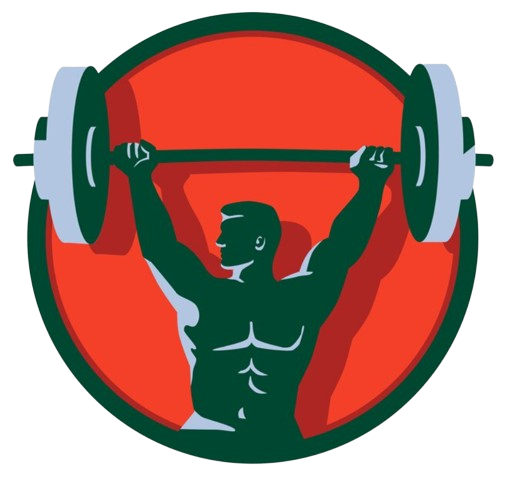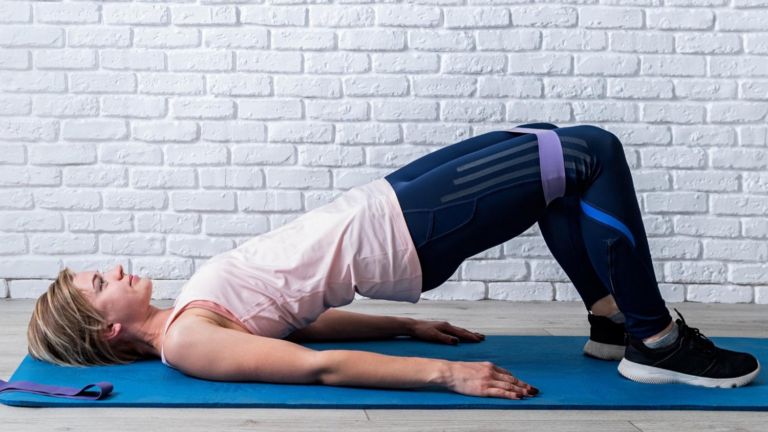How to Do Hip Thrusts the Right Way

Hip thrusts can help you strengthen your glutes and hamstrings. Perform this exercise with proper foot spacing and complete the full range of motion to take advantage of the benefits.
If you’re looking to build size and strength in your derrière, the hip thrust should definitely be part of your exercise routine.
A bent-leg hip extension exercise performed with your back on an elevated surface, the hip thrust is a favorite of lifters everywhere for its ability to target the posterior chain — especially the glutes — in a unique way.
What muscles are worked?
The hip thrust motion mainly targets the glutes — both the gluteus maximus and gluteus medius — as well as the hamstrings. Your quads, core, and hip adductors will be working, too.
What’s the point?
Hip thrusts build strength and size in your glutes in a way many other exercises cannot, and experts agree that they provide benefits for many people, from athletes to older adults over age 65.
Glute strength is important for the stabilization of your core, pelvis and lower body. Without it, you’re at higher risk of knee pain, low back pain, and other types of injuries.
Strong glutes also promote athletic abilities, like jumping, sprinting, and changing directions. In general, strong glutes are key to good mobility. An added perk? A nicely lifted and round backside.
How do you do a hip thrust?

Follow these steps to perform a hip thrust:
- Set up with your back against an elevated surface (like a bench or a box) with your knees bent and feet flat on the ground.
- The bench should hit just below your shoulder blades, and your feet should be about shoulder-width apart. You can rest your elbows on the bench.
- Keeping your chin tucked, push through your heels until your thighs reach parallel to the floor — your legs should form a 90-degree angle.
- Squeeze your glutes at the top, then return to start.
If you’re a beginner, aim for 3 sets of 12 reps, working your way up to 20 using body weight.
After that, progress in the exercise by experimenting with a single-leg variation or safely adding weight, either with a barbell, plate, or dumbbell — more on that below.
It’s worth noting that hip thrusts are similar to glute bridges, but they aren’t interchangeable.
While the movement is much the same, glute bridges are performed from the ground and target the quads more and the hamstrings less than hip thrusts.
How can you add this to your routine?
Hip thrusts can be a meaningful addition to a full-body workout or a leg-specific training day.
If you’re performing hip thrusts in conjunction with other leg exercises, like squats and deadlifts, ensure that you’re giving yourself — and your gams — enough rest in between workouts.
As always, make sure you’re properly warmed up before strength training. A 5-10 minute moderate cardio warmup, followed by some dynamic stretches, will do.
What are the most common mistakes to watch for?
There are a few form nuances to keep in mind when performing a hip thrust.
You aren’t completing the full range of motion
If you stop short of thighs parallel, your glutes won’t see full activation. To fix this, make sure you’re aiming for a 90-degree angle with your legs.
Your foot placement is incorrect
If your feet are too far forward, you’ll feel the hip thrust more in your hamstrings. If they’re too far in toward your body, you’ll get more quad engagement.
Like Goldilocks, you’ll need to find a foot positioning that’s “just right” to feel the hip thrust primarily in the glutes.
Your lower back isn’t neutral
If your ribs are up and your lower back is arched — or hyperextended — at the beginning of the movement, you won’t achieve full extension of the hips for glute activation.
Make sure that your ribs are down and your lower back is neutral to achieve full extension of the hips.
You’re coming up onto your toes
Some have the tendency to rise up onto the balls of their feet at the top of the thrust. This happens either because your foot placement is off, or you are quad-dominant.
Reassess where your feet are and ensure that your legs form a 90-degree angle at the top. Then, focus on heel contact throughout the movement.
Can you add weight?
Once the bodyweight hip thrust becomes easy, try adding extra resistance in the following ways:
With a dumbbell or weighted plate
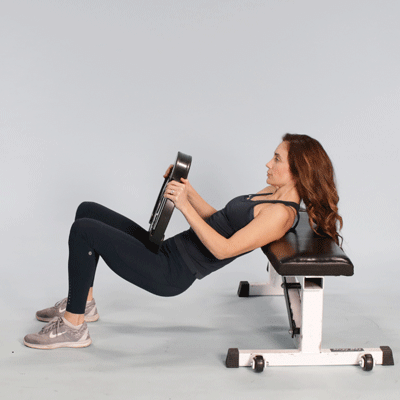
Gently place a dumbbell or weighted plate to rest on your hip bones during the thrust.
With a barbell
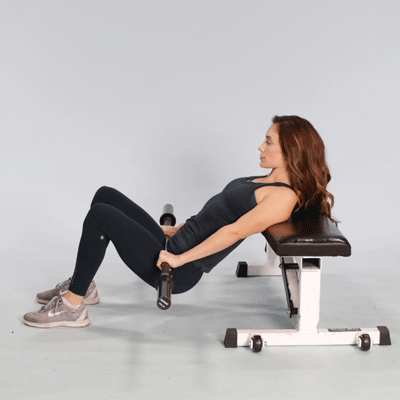
You have a few options here.
If you’re using Olympic-sized plates on a barbell, you can simply roll it over your feet.
If your barbell weight is lighter, you can have a partner assist you in loading it onto your hips. You can also deadlift the bar up, sit on a bench, then get into the starting position from there.
Regardless of how you assume the starting position, the barbell should be placed in the crease of the hips with hands on either side to stabilize it throughout the movement.
With a hip thrust machine
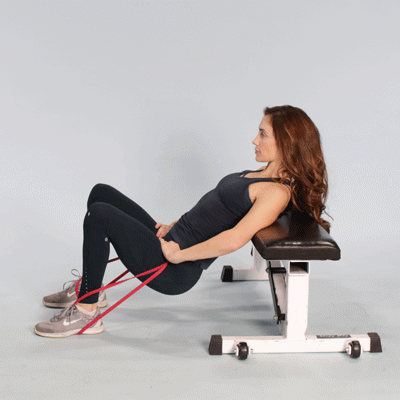
This specific type of bench allows you to hip thrust with a barbell or resistance bands with a very easy setup.
When you start to add significant weight to your hip thrust, you may notice pain where the bar lies. Consider using specialized pads or rolling up a yoga mat or towel to cushion your hips and prevent discomfort.
What variations can you try?
Try these variations of a hip thrust to keep things interesting — and to continue challenging yourself!
Glute bridge
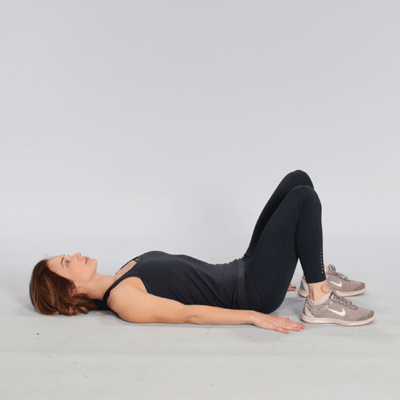
As mentioned above, the glute bridge and hip thrust are similar but focus on different muscles.
Perform a glute bridge with your upper body on the ground instead of on a bench.
If you feel your quads activating a lot in a hip thrust, the glute bridge would be a good alternative for you to really focus on your glutes.
Single-leg hip thrust
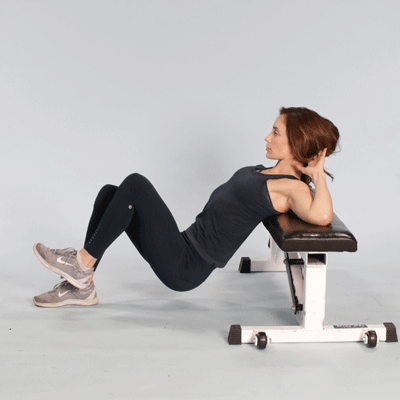
A progression of the hip thrust, straighten one leg and hold it at a 45-degree angle while performing the movement.
Hip thrust off bench

Grab another bench or box of equal or slightly greater height and perform the hip thrust with your feet elevated.
The range of motion here will be greater than a standard hip thrust — try to drop down lower than you would if you were on the ground.
The bottom line
When performed correctly, hip thrusts are one of the most effective ways to add size and strength to your glutes. The good news is, they’re accessible for pretty much everyone. So if you aren’t already, (hip) thrust away.
